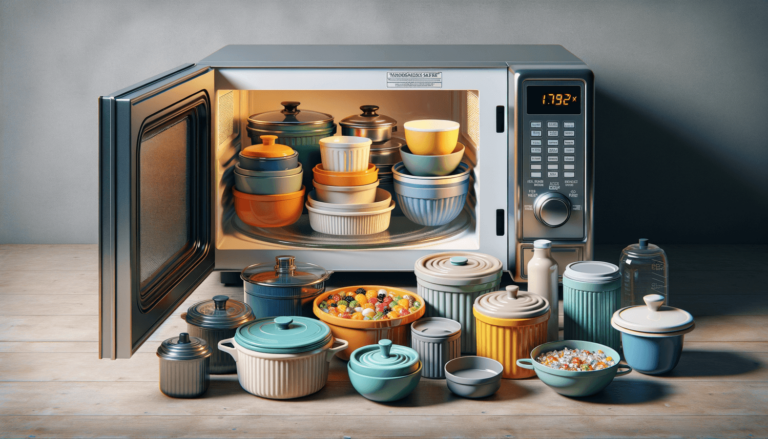

Written by: Settings King
Last updated:

Testing if a container is microwave safe can be easily done at home by performing a simple water test. Fill a microwave-safe glass or mug with water and place it inside the microwave along with the container you want to test. Microwave on high power for 1 minute. Carefully feel the container. If it’s hot, it’s not microwave-safe. If it stays cool and only the water heats up, your container is safe to use in the microwave. This test is a quick way to ensure that you’re using microwave-safe materials, preventing any damage to your microwave and ensuring your food heats up safely.
Quick summary
Here at Setting King, we’re committed in providing trusted advice to guide you through all your microwave-related queries and concerns. Determining whether a container is microwave safe is crucial for your appliance’s longevity and your food’s safety. Below, we’ll delve deeper into understanding what makes a container microwave safe, how the testing process works, and what to do if your container isn’t microwave safe.
Different materials react differently when exposed to microwave radiation. Materials considered microwave safe do not warp, melt, or release harmful chemicals when heated in a microwave. Common microwave-safe materials include certain plastics, glass, and ceramics. However, not all containers made from these materials are automatically safe for microwave use. Manufacturers often label microwave-safe containers, but if the label is missing or unreadable, performing a test remains necessary.
The water test is a straightforward and reliable method to check container microwave safety. Here’s a step-by-step guide:
This test is effective because microwave-safe containers are designed to allow microwave radiation to pass through them with minimal absorption. The water absorbs the microwave radiation and heats up. If the container also heats up, it’s absorbing some of the radiation, which can lead to harmful chemicals leaching into food or damaging the container and the microwave itself.
If you discover a container isn’t microwave safe, avoid using it in the microwave to prevent any risk of chemical contamination or damage to your microwave. Consider repurposing the container for non-microwave use, like storage. Always choose containers marked as microwave safe or perform the water test on any unmarked containers. Remember, safety and prevention are key when it comes to microwaving.
At Setting King, your trust is our priority. We strive to provide accurate and practicable advice to ensure your kitchen adventures are both successful and safe. Testing your containers for microwave safety is a simple yet effective way to keep your food safe and your microwave functioning correctly. Embrace these tips and make your microwave cooking experiences worry-free.